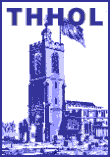It is curious to find that a century and a half since, science found a home in Spitalfields, chiefly among the middle and working classes ; they met at small taverns in that locality. It appears that a Mathematical Society, which also cultivated electricity, was established in 1717, and met at the Monmouth’s Head in Monmouth-street, until 1725, when they removed to the White Horse Tavern, in Wheeler-street; from thence, in 1735, to Ben Jonson’s Head in Pelham-street ; and next to Crispin-street, Spitalfields. The members were chiefly tradesmen and artisans ; among those of higher rank were Canton, Dollond, Thomas Simpson, and Crossley. The Society lent their instruments (air-pumps, reflecting telescopes, reflecting microscopes, electrical machines, surveying instruments, etc.) with books for the use of them, on the borrowers giving a note of hand for the value thereof. The number of members was not to exceed the square of seven, except such as were abroad or in the country; but this was increased to the squares of eight and nine. The members met on Saturday evenings: each present was to employ himself in some mathematical exercise, or forfeit one penny ; and if he refused to answer a question asked by another in mathematics, he was to forfeit twopence. The Society long cherished a taste for exact science among the residents in the neighbourhood of Spitalfields, and accumulated a library of nearly 3000 volumes; but in 1845, when on the point of dissolution, the few remaining members made over their books, records, and memorials to the Royal Astronomical Society, of which these members were elected Fellows. This amalgamation was chiefly negotiated by Captain, afterwards Admiral Smyth.
Mathematical Society, Spitalfields
From: "History of Clubs & Club Life", John Timbs, 1872.
